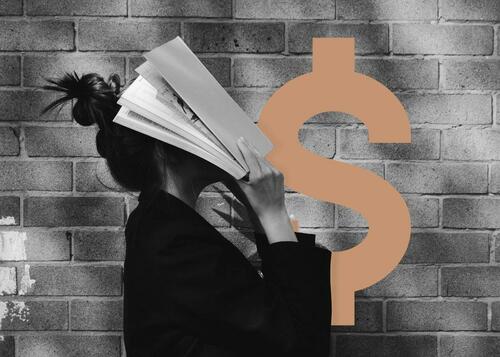Authored by Sam Bourgi via CreditNews.com,
Recent Fed data showed that Americans racked up an extra $48 billion in credit card debt last quarter - but that might be the tip of the short-term debt iceberg.
With more Americans getting close to maxing out their credit cards, they are turning to “buy now, pay later” (BNPL) financing.
Analysts call this financing “phantom debt” because there’s no way to monitor it.
Unlike credit cards, BNPL loans allow shoppers to pay for purchases immediately without hard credit checks and a lengthy approval process. Many programs charge no interest rates and offer other incentives to lure in customers.
Some of the most popular BNPL programs are offered by providers like Afterpay, Klarna, Affirm, and even PayPal.
Bruce McClary, a spokesperson for the National Foundation for Credit Counselling, said the growing popularity of BNPL signals “an increase of short-term debt on top of the more than $1 trillion in outstanding credit card balances.”
Although data on BNPL programs is hard to come by, Adobe Analytics reported a sharp uptick in their usage during this year’s Cyber Week sales event.
In fact, it's estimated that BNPL contributed $940 million to online spending over the five-day sales event, an increase of 42.5% compared to 2022.
For November, "buy now, pay later" spending reached a staggering $8.3 billion—up 17% from last year.
While BNPL lets consumers kick the debt can further down the road, experts warn that these programs pose a great danger to personal finances and are a ticking time bomb for the economy.
An “unregulated danger zone”
A recent report by Wells Fargo economists called phantom debt an “unregulated danger zone” that could give customers “a false security in which many small payments add up to one big problem.”
Wells Fargo estimates that "buy now, pay later" loans will reach roughly $46 billion this year. By comparison, a 2019 report by the Consumer Finance Protection Bureau found that the five largest BNPL providers originated about $2 billion worth of loans that year.
Nevertheless, Wells Fargo cautioned that these numbers should be taken with a grain of salt.
“Until there is a definitive measure for it, there is no way to know when this phantom debt could create substantial problems for the consumer and the broader economy,” the report said.
A spokesperson for Affirm, a BNPL financial services provider, told The New York Times that the company only extends credit to customers who “have the ability and willingness to repay above that of revolving credit accounts.”
The company reported a 2.4% delinquency rate in its most recent quarter, which is less than the national average of 3% for credit card loans, according to Fed data.
Afterpay, another leading BNPL provider, has struggled with a higher delinquency rate in recent years. In 2022, more than 4% of the company’s outstanding loan dollars were past due by 60 days or more, according to Fitch Ratings.
America’s addiction to credit grows
Americans have long turned to credit cards to finance big purchases, but economists say households are now relying on credit to cover everyday living expenses.
Experts think that's an obvious canary in the coal mine, suggesting the economy isn't working as it's supposed to.
If credit card usage increases when inflation is high, and the economy is slowing, it suggests that “an increasing number of consumers are being forced to use credit cards to make ends meet,” said Stephane Renevier, a senior global markets analyst at financial research firm Finimize.
In an interview with Bloomberg, Bruce McClary of the National Foundation for Credit Counselling said:
“Consumers have leaned on their available lines of credit for necessities - things we expect consumers to be able to pay with the cash they have on hand.”
“But they’re running out of room,” he warned.
Research from Bankrate shows that nearly 50% of Americans carry revolving debt—a sharp increase from 39% a year ago. Meanwhile, credit card debt jumped by a whopping third in just two years.
